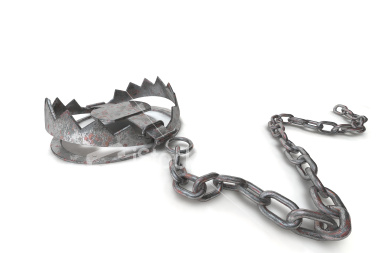Avoid This Trap When Investing in Foreign Stock Markets

When you invest your savings in foreign stock markets, you can still lose money despite markets going up. The risk here is the currency trap. Read on to understand this trap and how to avoid it.
Imagine the following situation. You have invested some of your savings in a foreign stock market. The reason is that you expected that market to go up much more than the stock markets at home. And you invested in the safest possible way:
- Broad market index funds
- Long-term trend points up
And still, you are losing money on this investment. How can this be? What is happening here is that the foreign currency is moving against you.
Currency Foreign Stock Markets
Every country or region has its own currency. The US has its dollar. The EURO zone in Europe has its Euro. Japan has the Yen.
These currencies are traded on the free market. There exchange rates are not fixed. These rates move up and down as a result of a very complex set of factors.
To me, fluctuations in currency exchange rates seem to be even more unpredictable than how stock markets are moving.
In June 2010, you had to pay $1.20 for one Euro. Five months later in November, you paid more than $1.41. Thus the Euro had increased more than 17% in value compared to the dollar in 5 months. Similar movements happened in 2011: from $1.30 in January the price of a Euro increased to $1.48 in May.
Remember that nobody knows before in which direction the value of a currency will move and how high or low it will go.
The problem you may have when investing abroad is that the value of the currency of that market decreases more than that the stock market goes up. This can happen specifically in periods that stock markets over time move more sideways than upwards.
Example of the Trap
Suppose that you live in the US. You count your savings and profits in US dollars. Assume that you invested in October 2010 in German DAX index fund. The DAX was on a level of 6,735 points. For one Euro you paid $1.42. Thus assume you paid 6,735 x 1.42 is $9,564.
Three months later in January 2011, the DAX has increased with 4% to 7,000 points. Wow, a nice return for 2 months you think. But when you sell the DAX fund, you only get $9,100 back. This is the result of selling the DAX at 7,000 points but with an exchange rate of only $1.30. Instead of making a 4% profit, you made a 5% loss.
The market moved up, but the exchange rate moved against you.
Warn now your friends for this trap. Please share this article on facebook, tweet it and click the Google +1 button.
In a following blog post, I will share an approach that you can use to avoid this trap when you want to invest a part of your savings in foreign stock markets.
Next & Previous Blog Post
- ‹ previous
- 117 of 174
- next ›


